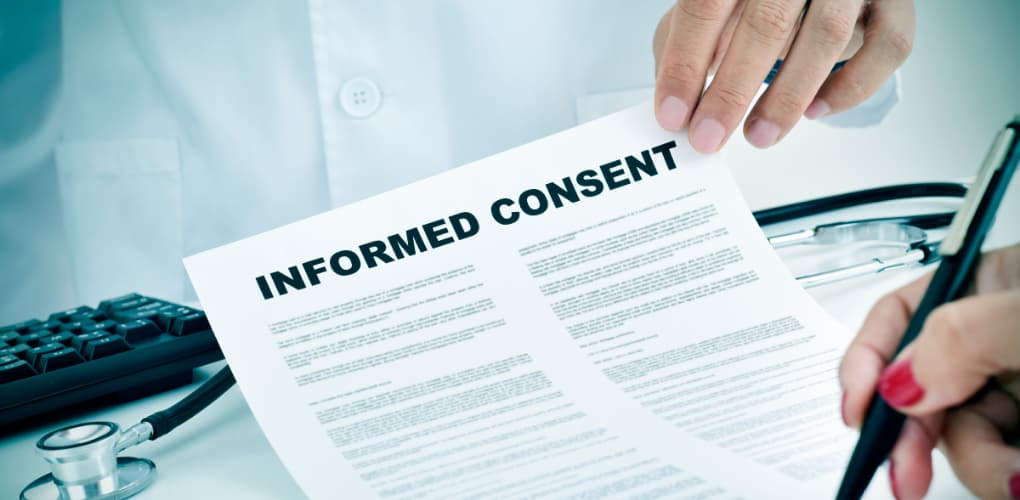< Back to Publications & Resources
Sharing Dental Patient Reviews, Testimonials and Photos: A Legal Perspective

Having an online presence is an important part of marketing for many dental practices, but it can introduce issues from a risk management perspective. In this blog, we’ll cover important considerations when sharing dental patient reviews, testimonials and photos online.
First and foremost, you must always, always, always get consent. Dentists should always have the consent of the patient to post anything related to their treatment, like pictures videos, stories and testimonials. If you follow this rule, it is much less likely that you’ll run into any issues down the line.
Testimonials and Reviews
When sharing a testimonial from a patient, it is also important to get consent to post that publicly. What if the patient posted a positive review publicly on Google or Yelp? It is still best that the dentist gets permission to reshare it to the dental website or dentists’ social media accounts.
Review sites can be the bane or blessing of a practitioner’s existence because dentists’ hands are tied by Health Insurance Portability and Accountability Act (HIPAA) when responding. In general, it is best to ignore the reviews and not respond. If you do reply, you can’t say anything that includes Protected Health Information (PHI) — and even implicitly acknowledging or confirming that a reviewer is your patient can be a HIPAA violation.
It is best to use a generic HIPAA compliant response for all responses to public, negative reviews. When a response is made, we recommend a reply like the following: “Our practice does not engage in discussing information in this forum. If there is a concern, we are happy to discuss over the phone.”
Despite the challenges with review sites, they can be very powerful sources of referrals for dentists. Many people go to social media or search engines to find a practitioner, and these sites follow algorithms — the more positive reviews you have, the less weight may be given to any negative reviews.
It is okay to encourage patients with whom you have a positive relationship to leave a review only. Dentists can hand out cards at the end of a successful patient interaction with a link or QR code for review sites, and this way, help populate these important sites with good results and reviews.
Photos and Videos
For photos and videos, dentists should get written consent — but be careful not to exceed the written consent. If the consent says “photographs” and doesn’t specify which one, that patient can argue that they didn’t give consent for that specific photo. The same applies for videos.
And remember, if the photo or video is identifiable, posting that publicly is probably a HIPAA violation unless the patient has consented.
Dentists can maintain a robust online presence and post patient reviews, testimonials, photos and videos by following risk management best practices. If there is ever a question about the proper consent or procedure, MLMIC policyholders can contact a team of risk management professionals 24/7 at no additional cost by calling (844) 667-5291 or emailing hotline@tmglawny.com.
For more resources for dentists, visit the MLMIC Dental blog, The Scope: Dental Edition, Dental Impressions and our Twitter and LinkedIn pages.



